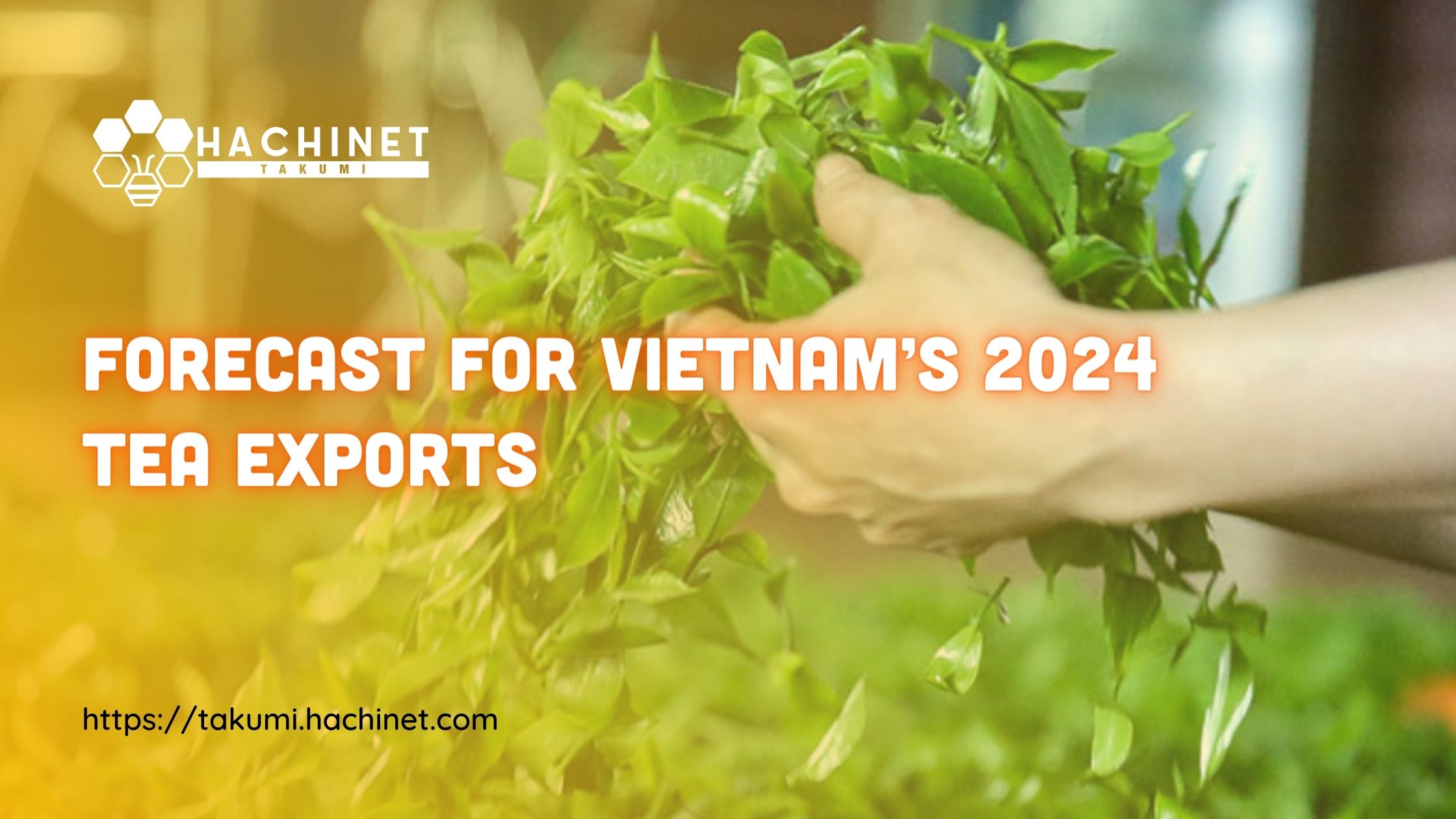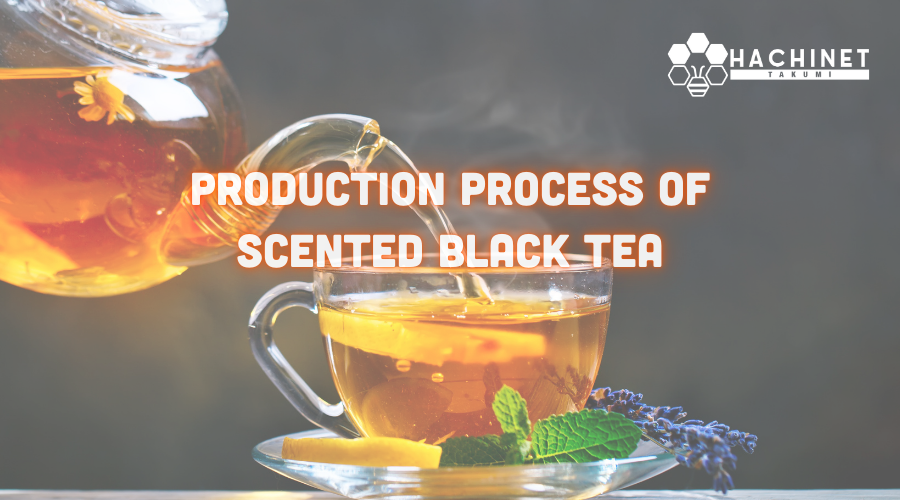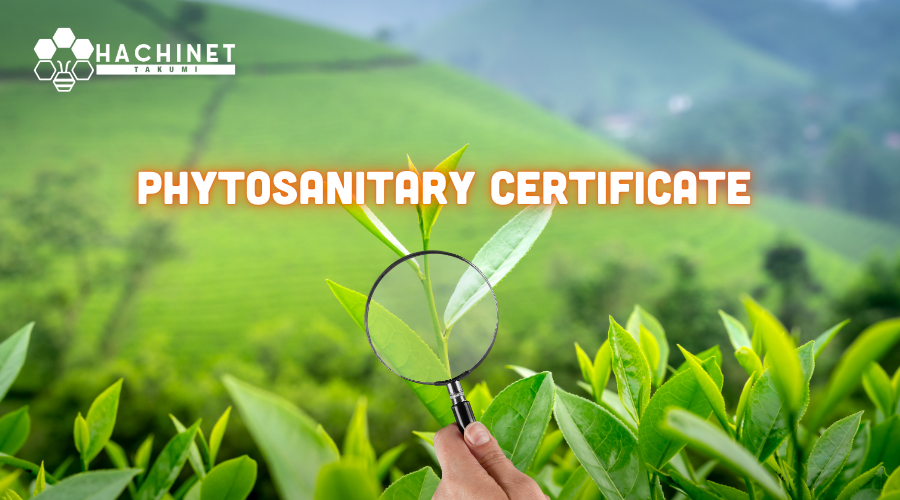Forecast for Vietnam’s 2024 Tea Exports

According to data from the General Department of Customs, tea exports in 2023 were estimated to reach 121,000 tons, valued at $211 million. This marked a decrease of 16.9% in volume and 10.9% in value compared to 2022. Specifically, in the fourth quarter of 2023, tea exports were estimated at 39,300 tons, valued at $70 million, an increase of 16.7% in volume and 18.1% in value compared to the third quarter of 2023.
1 . Green tea accounts for 94% of total Vietnam tea export
In 2023, the tea industry in Vietnam experienced a significant shift. The main factors causing a decrease in Vietnam’s tea export activities were weak market demand and increasingly stringent import regulations in major markets. The majority of Vietnam’s tea exports are currently in raw form, with low processing content.
Tea exports to major markets such as Pakistan, Taiwan, and Russia decreased in 2023 due to economic difficulties in these countries. The foreign currency shortage in Pakistan has made it difficult for many import businesses in this country to buy foreign currency to pay for exporters.
Despite an increase of more than 7% in the export price of Vietnamese tea in 2023 compared to 2022, this price is less than 70% of the average global tea export price. The average global tea export price in 2023 reached $2,600 per ton.
Over the years, while the demand for tea consumption worldwide has changed rapidly, shifting from ordinary tea products to deep-processed tea products, specialty tea, the tea industry in Vietnam has been slow to improve product quality, slow to invest in deep processing, and has done little research investment into new products. These are the reasons that make Vietnamese tea products lose their competitive edge.
Currently, green tea products still account for up to 94% of the total volume of tea exports from Vietnam. However, this is the lowest grade tea product, mainly using traditional roasting and drying methods, without deep processing.
Meanwhile, high-grade tea products such as black tea, scented tea, oolong tea only account for 6% of the total volume of tea exports. Although the export price of these deep-processed teas is very high, due to the low export volume, the export turnover is not significant.
Regarding the types of tea export products in 2023, green tea led in volume and value with 57,500 tons, valued at $113.5 million. This was a decrease of 6.9% in volume and 1% in value compared to the same period in 2022. Black tea followed with 46,000 tons, valued at $62.4 million, a decrease of 16% in volume and 18% in value. Scented tea reached 3,800 tons, valued at $8 million, a decrease of 4.7% in volume but an increase of 6.5% in value. Notably, oolong tea exports stood out with 1,300 tons, valued at $3.8 million, up 102% in volume and up 107% in value compared to 2022.

Green tea accounts for 94% of total Vietnam tea export
The tea industry in Vietnam, with its Vietnam tea suppliers, Vietnam tea wholesalers, Vietnam tea exporters, and Vietnam tea export companies, is a vibrant and dynamic sector. Despite facing challenges, it continues to evolve and adapt to meet the changing demands of the global market. The potential of Vietnamese tea is immense, and with continued efforts in improving product quality, investing in deep processing, and researching new products, the industry is poised for growth and success in the coming years.
2 . Forecast of Vietnam’s Tea Exports in 2024
- Market Factors: The global tea demand is projected to increase, and Vietnam Tea Suppliers, Vietnam Tea Wholesalers, Vietnam Tea Exporters, and Vietnam Tea Export Companies are strategically positioned to leverage this trend. However, the market landscape is influenced by a variety of factors, including global commodity prices, geopolitical uncertainties, and the economic health of Vietnam’s primary export markets.
- Production Factors: Vietnam’s tea production is distinguished by its extensive tea cultivation area and diverse tea varieties. However, challenges such as unpredictable weather patterns and overuse of agrochemicals have led to fluctuations in crop quality and yield. Initiatives are underway to promote sustainable farming practices, leading to a significant increase in average income.
- Policy Factors: Policies also play a pivotal role in shaping Vietnam’s tea exports. Geopolitical events such as the conflict between Russia and Ukraine and China’s “Zero Covid” policy have impacted Vietnam’s tea export market. On a positive note, free trade agreements like the CPTPP and the EVFTA continue to provide favorable conditions for Vietnam’s tea products.
- Export Volume and Value Forecast: While specific figures for 2024 are not yet available, the general economic outlook for Vietnam is optimistic, with GDP growth expected to reach between 6.13% and 6.48%. Given the rising global demand for tea and the continuous improvements in Vietnam’s tea industry, it is reasonable to anticipate a corresponding increase in the volume and value of Vietnam’s tea exports. Consequently, Vietnam Tea Suppliers, Vietnam Tea Wholesalers, Vietnam Tea Exporters, and Vietnam Tea Export Companies are expected to witness significant growth and opportunities in the coming years.

Forecast of Vietnam’s Tea Exports in 2024
3 . Deep Investment and Diversification Needed in Vietnam Tea Exports
According to the Ministry of Agriculture and Rural Development, Vietnam currently has 120,000 hectares of tea cultivation. The country has 257 industrial-scale tea processing enterprises, with a total design capacity of 5,200 tons of fresh buds per day, employing 220,000 workers to produce nearly 200,000 tons of products each year.
In tea processing activities, some enterprises have invested in modern processing technology chains, producing a variety of products, thereby gradually enhancing value. However, in reality, tea production in Vietnam still has many weaknesses. The application of good agricultural practices and organic production has been deployed for many years, but so far the rate is still low; the quality management of tea varieties and tea variety production and business establishments in some localities is still loose, and the handling regime still faces many difficulties.
“In the field of tea processing, currently, the number of tea processing factories equipped synchronously, good machinery and equipment, ensuring technical standards only accounts for 20%; the number of factories with temporarily meeting technical requirements processing technology is 60%; the number of patchy processing establishments, not meeting the technical requirements of the tea processing process is 20%”.
- According to the report of the Ministry of Agriculture and Rural Development.
Currently, tea production according to households accounts for nearly 65% in terms of area, with a scale of about 0.2 ha/household; the situation of raw material collection through many levels increases the input raw material price, prolongs the preservation time, reduces the raw material quality, increases investment costs.
The Ministry of Agriculture and Rural Development sets the goal of sustainable development of the tea industry, in a modern, synchronous direction, commodity production, diverse products of quality, ensuring food safety brings high added value, improving income for producers and traders. The goal by 2030, the tea planting area of Vietnam reaches from 135 to 140 thousand hectares; strive by 2025 the area of safe-certified tea will be 55% and by 2030 about 75%.
To boost exports to major markets around the world and increase tea export turnover, the tea industry in Vietnam must promote safe tea production; encourage tea-producing enterprises to apply high technology, focus on quickly increasing the proportion of high-value products and new products.
In particular, enterprises need to invest in deep processing of tea products, reduce green tea output, increase deep-processed tea products and specialty tea, such as oolong tea, fermented tea, black tea, white tea, tea scented with various types of flowers… Localities need to promote safe tea production; encourage people to produce tea applying high technology, biology, organic agriculture; support people to link production with processing and product consumption.

Deep Investment and Diversification Needed in Vietnam Tea Exports
As a leading B2B platform, Freshdi.com is proud to share these insights about the tea industry in Vietnam. We connect Vietnam tea suppliers, Vietnam tea wholesalers, Vietnam tea exporters, and Vietnam tea export companies with global buyers, providing them with up-to-date market information and trends. Our mission is to promote Vietnamese tea to the world and contribute to the growth of Vietnam’s tea industry. We believe in the potential of Vietnamese tea and are committed to providing the most accurate and timely information to our users.







